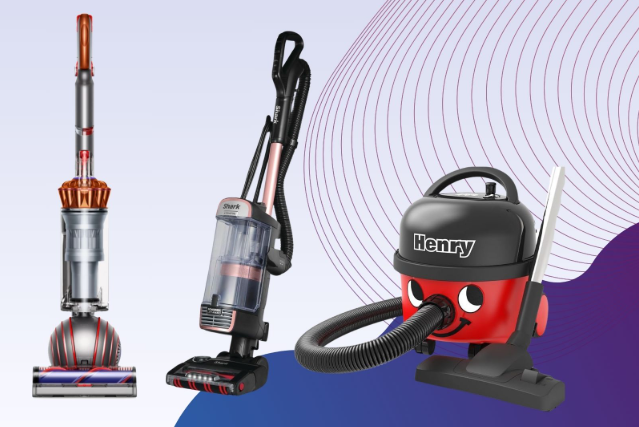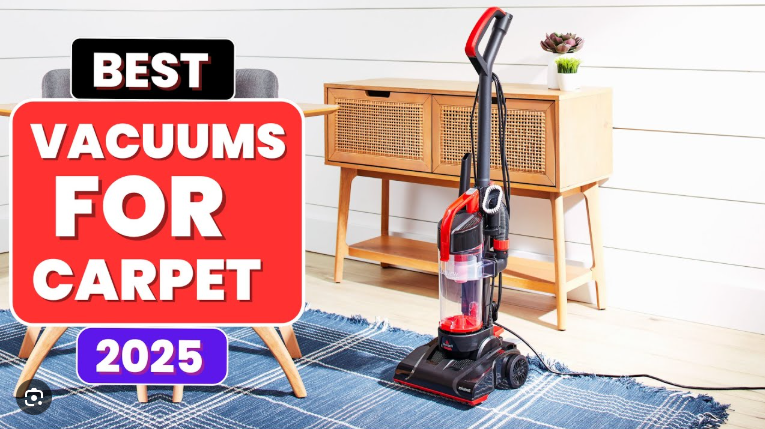When it comes to household cleaning, a Dyson vacuum cleaner is often at the top of the list for many homeowners. Known for their sleek design, cutting-edge technology, and powerful suction, Dyson vacuums have built a reputation as premium cleaning tools. But with a higher price tag than many competitors, are they truly worth the investment? In this comprehensive Dyson vacuum cleaner review, we’ll dive into the features, performance, and practical tips for using, maintaining, and troubleshooting these machines. Whether you’re considering a cordless model like the Dyson V15 Detect or a corded upright like the Ball Animal 3, this guide will help you decide if a Dyson is right for you.
Why Choose a Dyson Vacuum Cleaner?
Dyson vacuum cleaners are celebrated for their innovative engineering and ability to tackle a wide range of cleaning tasks. From pet hair to fine dust, Dyson’s patented cyclone technology ensures consistent suction without clogging. Models like the Dyson V15 Detect and Gen5detect have set benchmarks in the industry with features like laser dust detection, HEPA filtration, and long-lasting battery life for cordless models. But what makes Dyson stand out in the crowded world of vacuum cleaners? Let’s break it down.

Key Features of Dyson Vacuum Cleaners
Dyson vacuums are packed with features that cater to various cleaning needs. Here are some standout aspects that make them a favorite among users:
- Powerful Suction: Dyson’s digital motors, like the one in the Gen5detect spinning at 135,000 RPM, provide exceptional suction power, making them ideal for carpets, hard floors, and pet hair.
- Cordless Convenience: Models like the Dyson V8, V11, and V15 Detect offer cordless operation, making them lightweight and easy to maneuver. The Gen5detect boasts up to 70 minutes of run time, perfect for larger homes.
- Advanced Filtration: Dyson’s fully-sealed HEPA filtration system captures 99.99% of particles as small as 0.1 microns, ensuring cleaner air—great for allergy sufferers.
- Versatile Attachments: From the Fluffy Optic cleaner head for hard floors to the Digital Motorbar for carpets, Dyson vacuums come with tools like the hair screw tool and crevice tool for tackling stairs, upholstery, and tight spaces.
- Smart Technology: The V15 Detect and Gen5detect feature LCD screens that display real-time particle counts, battery life, and maintenance alerts, making how to use a vacuum cleaner more intuitive.
- Anti-Tangle Technology: The Motorbar cleaner head with hair removal vanes prevents hair from wrapping around the brush roll, a game-changer for pet owners.
These features make Dyson a top contender in the best vacuum cleaner guide for those seeking high performance and ease of use.
Dyson Vacuum Cleaner Models: A Quick Overview
Dyson offers a range of models to suit different needs and budgets. Here’s a snapshot of some popular options based on recent reviews:
- Dyson V15 Detect: Known for its laser-guided Fluffy Optic head that reveals hidden dust, this cordless model is a top pick for its balance of power, battery life (up to 60 minutes), and smart features. It’s ideal for mixed flooring and pet owners. “The suction power is outstanding, effortlessly picking up dirt, dust, and pet hair from carpets and hard floors,” says one reviewer.
- Dyson Gen5detect: Dyson’s most powerful cordless vacuum with a 70-minute run time and a brighter laser for dust detection. It’s a premium choice but may be overkill for smaller homes due to its size and cost.
- Dyson V8: A budget-friendly cordless option with up to 40 minutes of run time. It’s lightweight and great for small spaces, though it lacks the advanced features of newer models.
- Dyson Ball Animal 3: A corded upright vacuum designed for deep cleaning carpets and handling pet hair. It’s heavier but offers consistent power without battery concerns.
- Dyson V15s Detect Submarine: A wet/dry vacuum that combines powerful suction with a mopping function for hard floors, though it requires switching attachments.
Each model caters to specific needs, so consider your home size, floor type, and cleaning habits when choosing. For more details on selecting the right model, check out this vacuum cleaner comparison guide.
How to Use a Dyson Vacuum Cleaner Effectively
Mastering how to use a vacuum cleaner like a Dyson can maximize its performance. Here are some vacuum cleaner tips to get the most out of your machine:
- Choose the Right Attachment: Use the Fluffy Optic head for hard floors to avoid scratches and capture fine dust. The Digital Motorbar is best for carpets, as it adjusts to different pile heights.
- Adjust Power Modes: Dyson’s cordless models offer Eco, Auto, and Boost modes. Use Eco for light cleaning to extend battery life, Auto for adaptive suction, and Boost for stubborn dirt.
- Vacuum in a Pattern: Move in overlapping straight lines to ensure thorough cleaning, especially on carpets. For hard floors, use slow, deliberate passes to capture fine debris.
- Empty the Bin Regularly: Dyson’s no-touch bin emptying makes this easy. Empty the bin when it’s about two-thirds full to maintain suction.
- Use Handheld Mode: Convert cordless models to handheld mode for stairs, upholstery, or car interiors using tools like the hair screw tool or crevice tool.
Following these steps ensures effective vacuum cleaner cleaning and keeps your home spotless.
Vacuum Cleaner Setup: Getting Started with Your Dyson
Vacuum cleaner setup for a Dyson is straightforward, but proper assembly is key to optimal performance. Here’s how to set up your Dyson vacuum:
-
- Unbox and Check Components: Ensure you have all parts, including the main unit, cleaner heads, attachments, charger, and docking station (if included).
- Assemble the Vacuum: For cordless models, attach the wand and cleaner head by clicking them into place. For upright models like the Ball Animal 3, follow the manual to connect the hose and attachments.
- Charge the Battery: For cordless models, fully charge the vacuum before first use (typically 4–5 hours). Use the wall-mounted docking station for convenient storage and charging.
- Install Filters: Ensure the HEPA or washable filters are properly installed. Check the manual for specific filter placement.
- Test the Vacuum: Turn it on, test different power modes, and try attachments to familiarize yourself with the controls.
Most Dyson vacuums come with clear instructions, and setup takes about 10–15 minutes. If you encounter issues, refer to the vacuum cleaner troubleshooting section below.
Vacuum Cleaner Maintenance: Keeping Your Dyson in Top Shape
Proper vacuum cleaner maintenance is essential to ensure your Dyson performs well over time. Here are key vacuum cleaner tips for upkeep:
-
-
- Clean the Filters: Wash the filter under cold water monthly and let it air dry completely (24–48 hours) before reinserting. This prevents suction loss and maintains air quality.
-
-
-
- Empty the Dust Bin: Use the no-touch ejection mechanism to empty the bin regularly. Rinse it with water if it’s particularly dirty, but ensure it’s dry before reattaching.
- Check for Blockages: Inspect the cleaner head, wand, and hose for clogs. Dyson’s design allows easy disassembly for clearing debris.
- Maintain the Brush Roll: The Motorbar’s anti-tangle vanes reduce hair buildup, but check occasionally for tangled debris and remove it manually if needed.
- Store Properly: Use the wall-mounted dock for cordless models to keep the vacuum charged and organized.
-
Regular maintenance extends the life of your Dyson and ensures consistent performance. For more maintenance tips, visit vacuumcleanert.com.
Vacuum Cleaner Troubleshooting: Common Issues and Fixes
Even premium machines like Dyson can encounter issues. Here are some common vacuum cleaner troubleshooting tips:
-
-
- Loss of Suction: Check for blockages in the wand, hose, or cleaner head. Clean or replace the filter if it’s dirty. Ensure the bin isn’t overfilled.
- Battery Not Holding Charge: For cordless models, ensure the battery is fully charged. If it’s older than 2–3 years, consider replacing it, as Dyson batteries are replaceable.
- Roller Not Spinning: Inspect the brush roll for tangled hair or debris. Clear it and ensure the cleaner head is properly attached.
- Vacuum Shuts Off: This could be due to overheating or a low battery. Let the vacuum cool down for 30 minutes or recharge it fully.
- Unusual Noise: Strange sounds may indicate a blockage or a worn-out part. Check all components and contact Dyson support if needed.
-
If problems persist, Dyson offers a 2-year warranty and lifetime support. Register your vacuum on the MyDyson app for personalized troubleshooting guidance.

Vacuum Cleaner Safety: Using Your Dyson Safely
Vacuum cleaner safety is crucial to avoid damage to your machine or home. Follow these guidelines:
-
-
- Avoid Wet Surfaces: Most Dyson vacuums (except the V15s Detect Submarine) are not designed for wet messes. Sucking up water can damage the motor or LCD screen.
- Unplug Before Maintenance: For corded models, always unplug before cleaning or inspecting the vacuum.
- Use Appropriate Attachments: Using the wrong cleaner head (e.g., Motorbar on hard floors) can scratch surfaces or reduce efficiency.
- Store Safely: Keep the vacuum in a dry, cool place to prevent damage to electronic components.
- Supervise Children: Ensure kids don’t play with the vacuum, especially corded models, to avoid accidents.
-
Pros and Cons of Dyson Vacuum Cleaners
Like any product, Dyson vacuums have their strengths and weaknesses. Here’s a balanced look based on user feedback and expert reviews:
Pros
-
-
- Exceptional suction power for deep cleaning.
- Cordless models are lightweight and versatile, ideal for portable vacuum cleaner needs.
- Advanced features like laser dust detection and anti-tangle technology.
- HEPA filtration improves air quality.
- Easy to empty and maintain with no-touch bin and washable filters.
-
Cons
-
-
- High price point, with models like the Gen5detect costing upwards of $700.
- Battery life can be limited in Boost mode or for larger homes.
- Some users report durability issues after 1–2 years, particularly with batteries or plastic components.
- Corded models like the Ball Animal 3 are heavy and less portable.
-
Is a Dyson Vacuum Cleaner Worth It?
This Dyson vacuum cleaner review highlights why Dyson remains a top choice for many. Their combination of powerful suction, innovative features, and sleek design makes them a standout in the best vacuum cleaner guide. Models like the V15 Detect and Gen5detect excel for tech-savvy users who value smart features and cordless convenience, while the Ball Animal 3 is a powerhouse for carpet-heavy homes. However, the premium price and occasional durability concerns mean they’re not for everyone.
If you prioritize performance, ease of use, and advanced technology, a Dyson is a worthwhile investment. For budget-conscious buyers, the Dyson V8 offers solid performance at a lower cost, especially if purchased on sale. Ultimately, your choice depends on your home’s needs, floor types, and whether you’re willing to pay for Dyson’s cutting-edge features.
For more insights on choosing the right vacuum, explore the resources at vacuumcleanert.com. With proper vacuum cleaner maintenance and care, a Dyson can keep your home spotless for years to come.